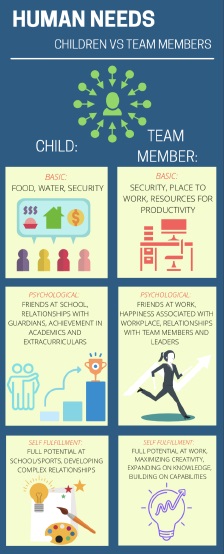 The other day I was watching my granddaughter, Emerson play with her dog Oden. The two are building a relationship for life. My granddaughter is 8 months old and Oden is a year and a half old. Julia, Emerson’s Mom knows the importance of this relationship and the impact it will have on their future as a family. Emerson and Oden learn something new about each other as they play nicely together. Julia watches over them closely and coaches both Emerson and Oden to be respectful of each other. At times both Oden and Emerson make mistakes and Julia very calmly coaches them and makes suggestions on how to treat each other. Oden plays rough and does not know the power of his own strength and Emerson likes to bite and pull on Oden’s ears. Julia is patient and kind in her approach as she must let the two make mistakes and practice being gentle and kind to each other. Julia knows this is a work in progress and keeps her eye on the prize because she knows it will result in a happy family life.
The other day I was watching my granddaughter, Emerson play with her dog Oden. The two are building a relationship for life. My granddaughter is 8 months old and Oden is a year and a half old. Julia, Emerson’s Mom knows the importance of this relationship and the impact it will have on their future as a family. Emerson and Oden learn something new about each other as they play nicely together. Julia watches over them closely and coaches both Emerson and Oden to be respectful of each other. At times both Oden and Emerson make mistakes and Julia very calmly coaches them and makes suggestions on how to treat each other. Oden plays rough and does not know the power of his own strength and Emerson likes to bite and pull on Oden’s ears. Julia is patient and kind in her approach as she must let the two make mistakes and practice being gentle and kind to each other. Julia knows this is a work in progress and keeps her eye on the prize because she knows it will result in a happy family life.
In my last post, I talked a lot about coaching culture and its benefits, but did not elaborate on how to integrate a coaching culture or how to create a workplace environment where a coaching culture would be sustainable and have a great impact on future projects.
What Does a Good Team Leader and a Good Parent Have in Common?
I started with the story of my granddaughter and how Julia, her Mom coaches Emerson and Oden on how to build trusting, safe, and resilient relationships. I tell the story. I can see a lot of similarities between being a good team leader and being a good parent. When raising a child, you want them to grow up to be a responsible and healthy citizen. Not to just simply survive. If we were talking about simply surviving they would only  need food, water, shelter and depending on their age, a varying amount of guidance in order to manage certain decisions. Of course when raising a child, the goal is not only survival but it is for the child to prosper enough to become an independent individual augmenting the world. To parallel, good team leaders should have the same aspirations for their team members and the projects that they produce. In other words, you can easily put together a team and keep them ‘alive’ with basic needs… It takes a good team leader to take a team and bring it to its maximum potential, just as it takes a good parent to nurture a child past the basic level of survival. As a team leader, coming to the realization of needing to progress a team’s potential calls for the implementation of a coaching culture.
need food, water, shelter and depending on their age, a varying amount of guidance in order to manage certain decisions. Of course when raising a child, the goal is not only survival but it is for the child to prosper enough to become an independent individual augmenting the world. To parallel, good team leaders should have the same aspirations for their team members and the projects that they produce. In other words, you can easily put together a team and keep them ‘alive’ with basic needs… It takes a good team leader to take a team and bring it to its maximum potential, just as it takes a good parent to nurture a child past the basic level of survival. As a team leader, coming to the realization of needing to progress a team’s potential calls for the implementation of a coaching culture.
In my story Julia used a coaching approach to help build Emerson’s and Oden’s relationship. In some instances she could predict what the outcomes would be and be proactive in how she might set up the room to prevent Oden from running too fast toward Emerson and knocking her over. Julia is always patient, kind, lets them make mistakes and she would admit that she did not know everything about how to teach both Emerson and Oden how to get along.
 Emerson is a very happy little girl and happiness in both children and team members is important. In Maslow’s hierarchy of needs for a human being, both physiological and psychological needs must be fulfilled in order to get to the point of self-fulfillment which means achieving one’s full potential and unlocking maximum creativity. This means children must be happy in order to thrive as their parents will them to. Once you correlate this belief on a smaller scale to a team setting, it is very easy to understand that team members also need to achieve happiness at work in order to be producing at their full potential. In a coaching culture, the first step is to make sure that all team members feel supported and comfortable in their positions. The happiness that this derives has the ability to set individuals up to expand their creativity in a collaborative setting and build on their capabilities. While this is true, there is no way to prescribe every team member the support that they need. Just as every child needs something different to achieve personal happiness, so does every team member. Getting to know the people you lead and making sure that members know and understand each other is vital in having a team that is producing at a high level.
Emerson is a very happy little girl and happiness in both children and team members is important. In Maslow’s hierarchy of needs for a human being, both physiological and psychological needs must be fulfilled in order to get to the point of self-fulfillment which means achieving one’s full potential and unlocking maximum creativity. This means children must be happy in order to thrive as their parents will them to. Once you correlate this belief on a smaller scale to a team setting, it is very easy to understand that team members also need to achieve happiness at work in order to be producing at their full potential. In a coaching culture, the first step is to make sure that all team members feel supported and comfortable in their positions. The happiness that this derives has the ability to set individuals up to expand their creativity in a collaborative setting and build on their capabilities. While this is true, there is no way to prescribe every team member the support that they need. Just as every child needs something different to achieve personal happiness, so does every team member. Getting to know the people you lead and making sure that members know and understand each other is vital in having a team that is producing at a high level.
Practice not Perfection
 As a leader, there is a lot that you are able to accomplish once you have a team that fully respects you. Here are a few tips on how to create a thriving coaching culture. Start by asking empowering and open-ended questions. Don’t be afraid of bringing additional support and training for a team, showing your team that you are not perfect and everyone can learn from each other. While implementing these techniques is generally simplistic, creating a coaching culture is about practice, not total perfection. Creating an environment where teams know their resources and how to support others/themselves is most important, but in itself assumes there to be error. Without error, there would never be growth. The key is to make sure teams are able to grow through their errors, not be afraid to fail, or have the fear of being smothered if they do. Want to know more? Check out Health Well Done Coaching.
As a leader, there is a lot that you are able to accomplish once you have a team that fully respects you. Here are a few tips on how to create a thriving coaching culture. Start by asking empowering and open-ended questions. Don’t be afraid of bringing additional support and training for a team, showing your team that you are not perfect and everyone can learn from each other. While implementing these techniques is generally simplistic, creating a coaching culture is about practice, not total perfection. Creating an environment where teams know their resources and how to support others/themselves is most important, but in itself assumes there to be error. Without error, there would never be growth. The key is to make sure teams are able to grow through their errors, not be afraid to fail, or have the fear of being smothered if they do. Want to know more? Check out Health Well Done Coaching.







